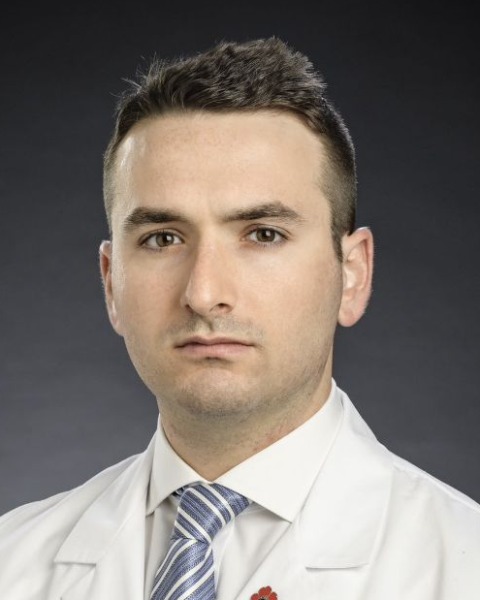Critical Care and Perioperative Management
Category: Scientific Abstract: Oral/Poster
Impact of Ex Vivo Lung Perfusion Location on Lung Transplant Outcomes
D. A.. Gouchoe1, D. Satija2, E. Y. Cui1, D. Ferrari-Light2, M. C. Henn2, K. Choi2, N. A. Mokadam2, A. M. Ganapathi3, B. A. Whitson2
1COPPER Lab, The Ohio State University Wexner Medical Center, Columbus, Ohio 2The Ohio State University Wexner Medical Center, Columbus, Ohio 3The Ohio State University, Columbus, Ohio
1COPPER Lab, The Ohio State University Wexner Medical Center, Columbus, Ohio 2The Ohio State University Wexner Medical Center, Columbus, Ohio 3The Ohio State University, Columbus, Ohio

Doug A. Gouchoe, MD (he/him/his)
COPPER Lab, The Ohio State University Wexner Medical Center
Columbus, Ohio, United States
Presenting Author(s)
Disclosure(s):
Doug A. Gouchoe, MD: No financial relationships to disclose
Purpose: Ex vivo lung perfusion (EVLP) offers physiologic assessment to evaluate marginal donors, however its use is limited by resources and expertise. EVLP conducted outside of the transplant center has increased in the recent years to mitigate these limitations. We aimed to evaluate EVLP performed at transplant centers and externally.
Methods: Lung transplant recipients from 2/28/18-10/20/22 were identified from the United Network for Organ Sharing Database. Recipient who did not receive an allograft that was evaluated by EVLP or those perfused by an organ procurement organization were excluded. Additionally, recipients younger than 18, multi-organ recipients, re-transplants were excluded. Recipients were then stratified into two groups based where they were perfused: Transplant Program (TP) or External Perfusion Centers (EPC). The groups were assessed with comparative statistics and long-term survival was assessed by Kaplan-Meier method. The groups were then 1:1 propensity matched based on donor and recipient characteristics, and then assessed with comparative statistics and Kaplan-Meier method.
Results: Prior to matching, those in the EPC group had significantly longer ischemic times (p < 0.0001), however did not differ in distance between donor and recipient hospital, perfusion time, nor presence of donation after cardiac death (DCD) donors (p>0.05). Inhaled nitric oxide (NO) use at 72 hours was significantly higher in the TP group (p < 0.005). However, no further differences were noted between groups: incidence of severe primary graft dysfunction (PGD3), extracorporeal-membrane oxygenation (ECMO) use at 72 hours, intubation rates at 72 hours, re-intubation or post-operative dialysis, stroke or airway dehiscence did not significantly differ. Cause of death did not differ significantly amongst the groups; those in the EPC group more often died from pulmonary causes where the TP group more often died from infection. Unadjusted Kaplan-Meier methods revealed no difference in long-term survival amongst the groups (Figure 1A, p=0.59). Following propensity matching, 190 recipients were included in each group. Only ischemic time was significantly higher in the EPC group (p < 0.05). There were no further differences in incidence of PGD3 or additional post-operative outcomes (Table). Kaplan-Meier methods revealed that there was no difference in the long-term survival of the propensity matched groups (Figure 1B, p=0.91).
Conclusion: In this national cohort, matched EPC and TP groups demonstrated no differences in post-operative outcomes or long-term survival despite longer ischemic times for the EPC allografts. EVLP performed at an EPC can be carried out with results and survival similar to allografts undergoing EVLP at a TP. EPCs will extend the valuable resource of EVLP to lung transplant programs without the resources to perform EVLP.
Identify the source of the funding for this research project: This project received Division funding. Additionally, BAW is supported through the National Institutes of Health National Heart Lung and Blood Institute grant R01HL143000.
